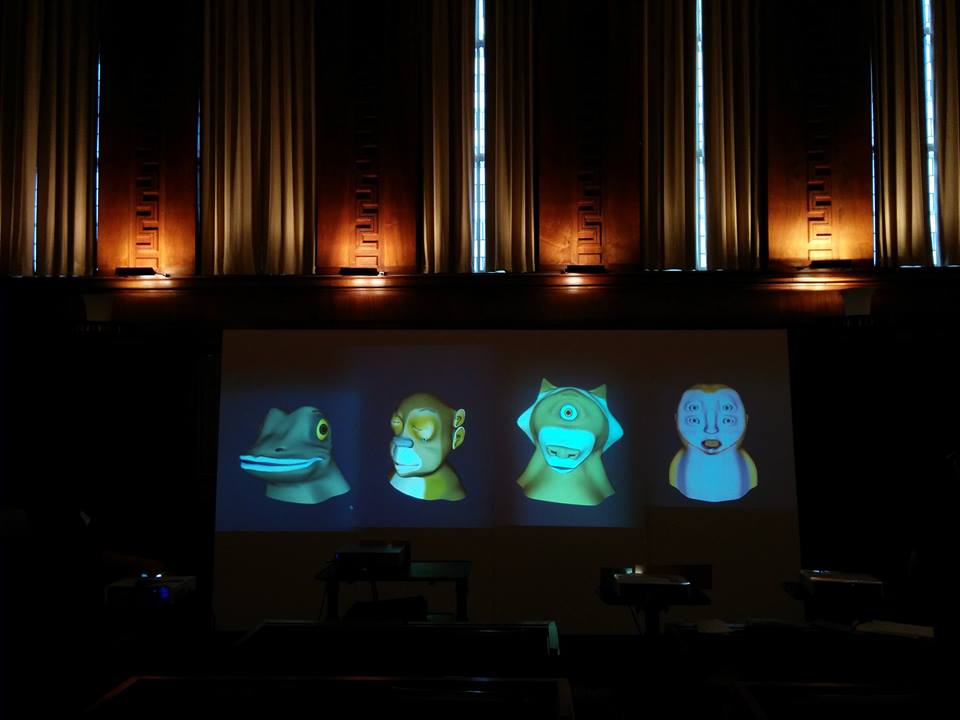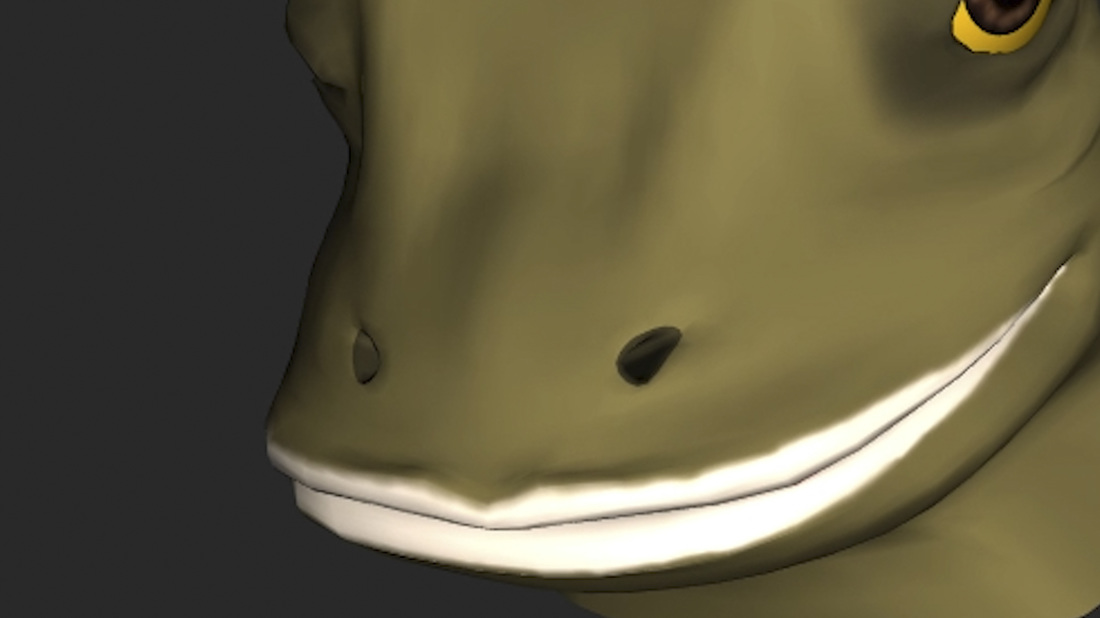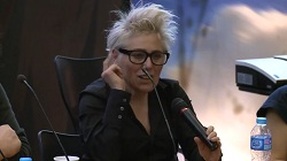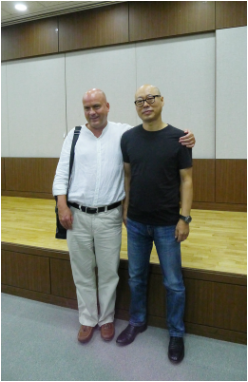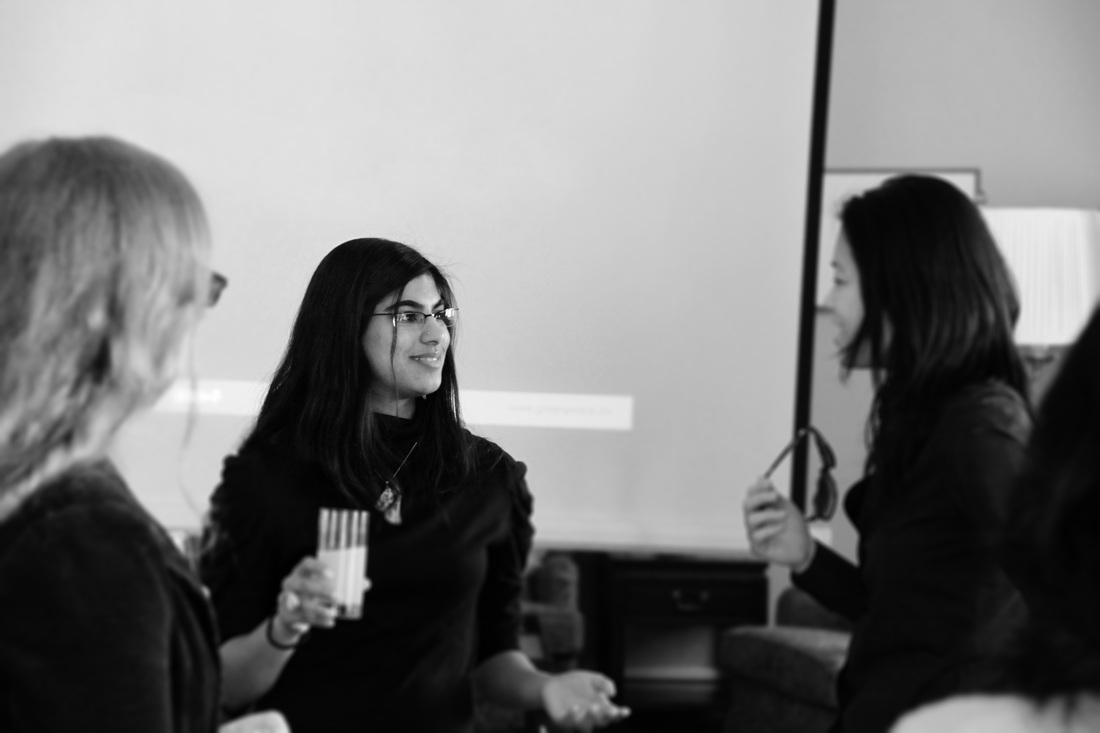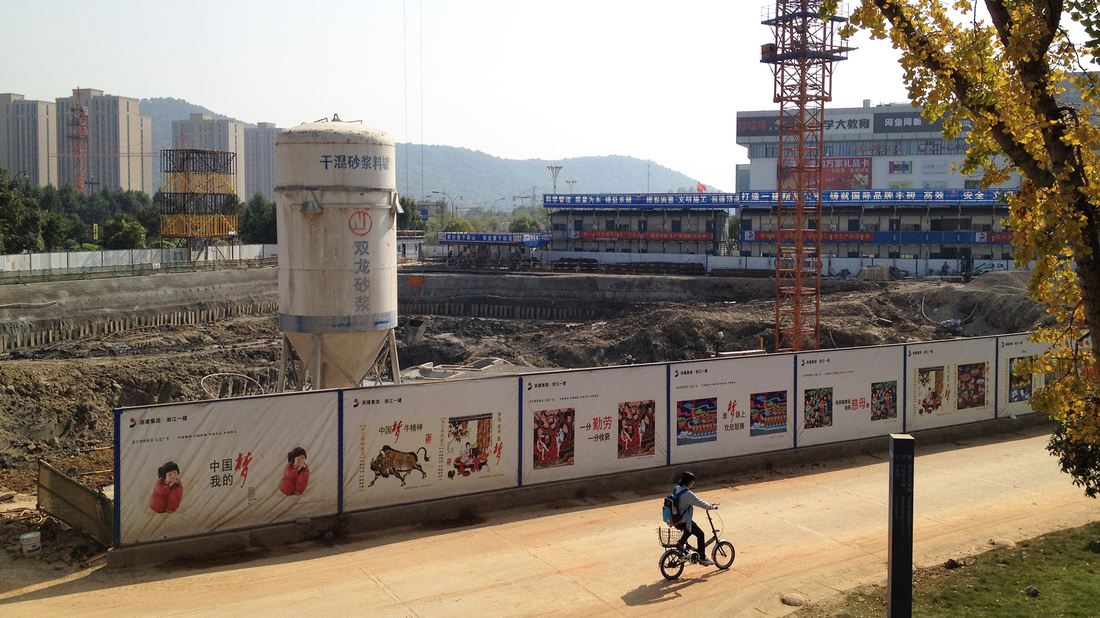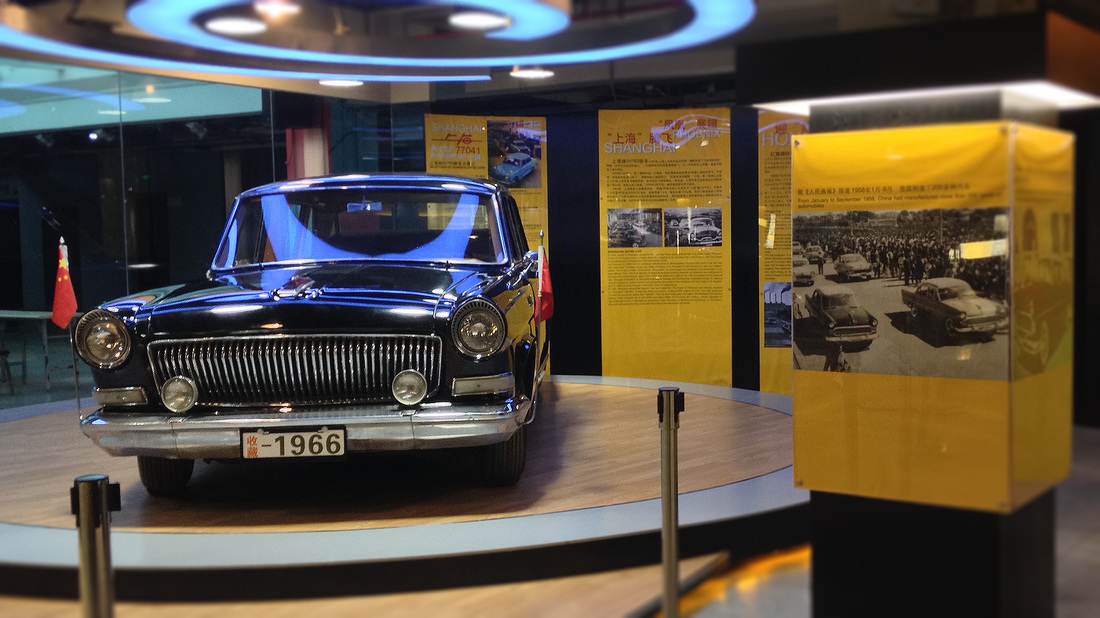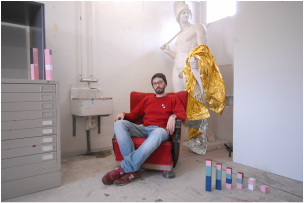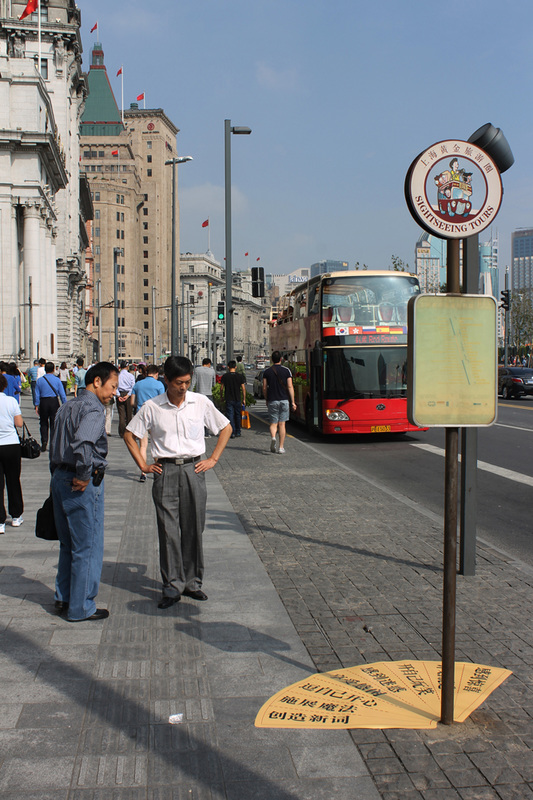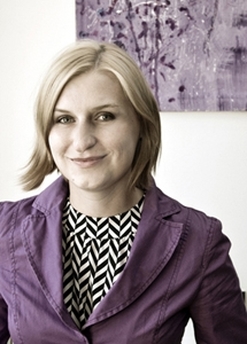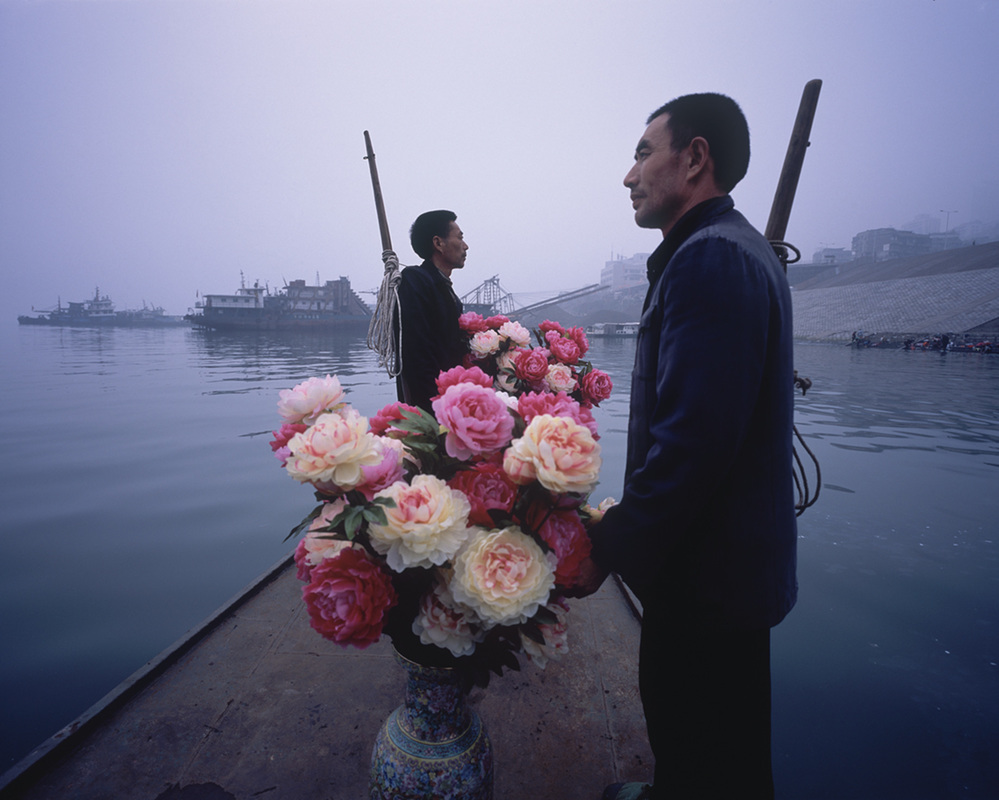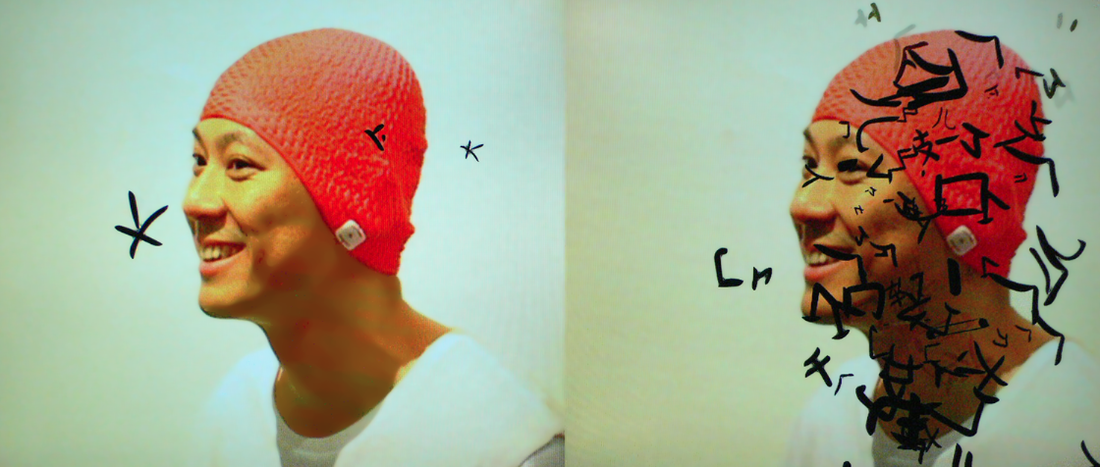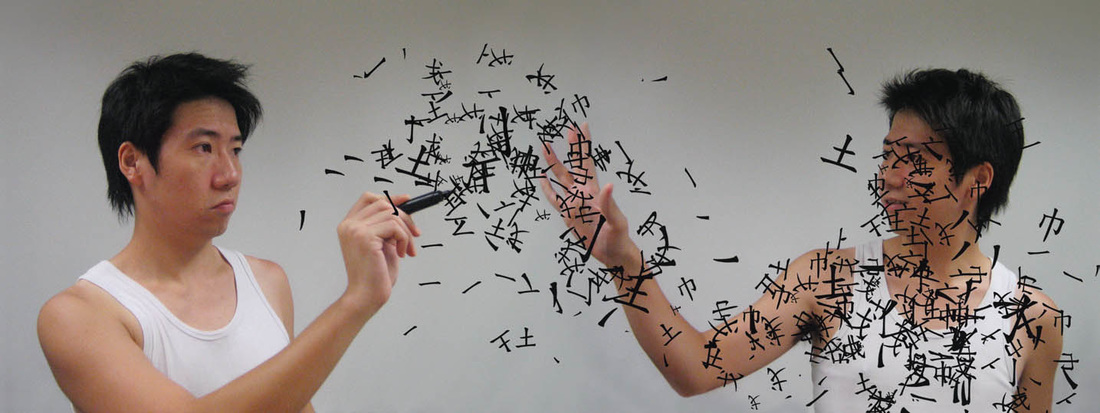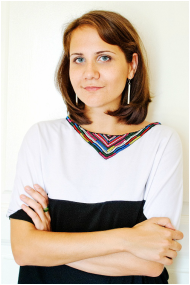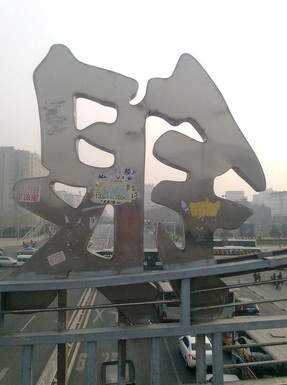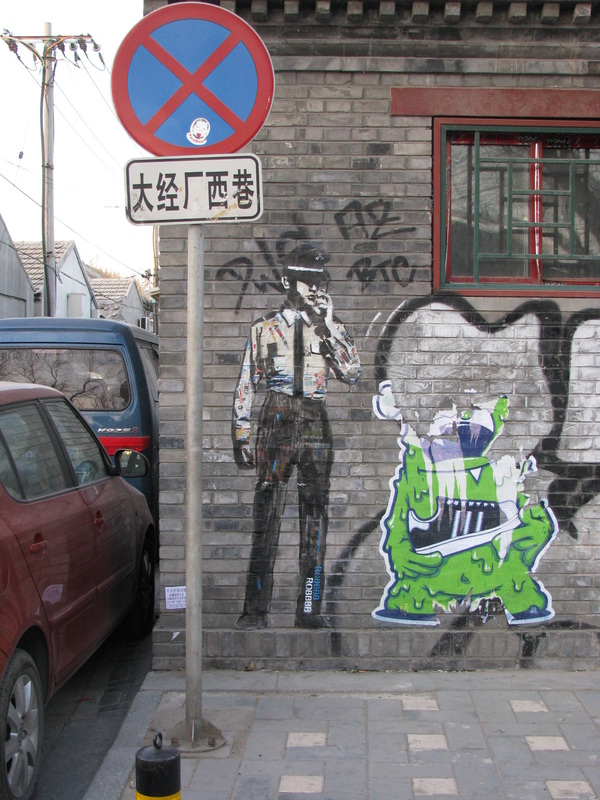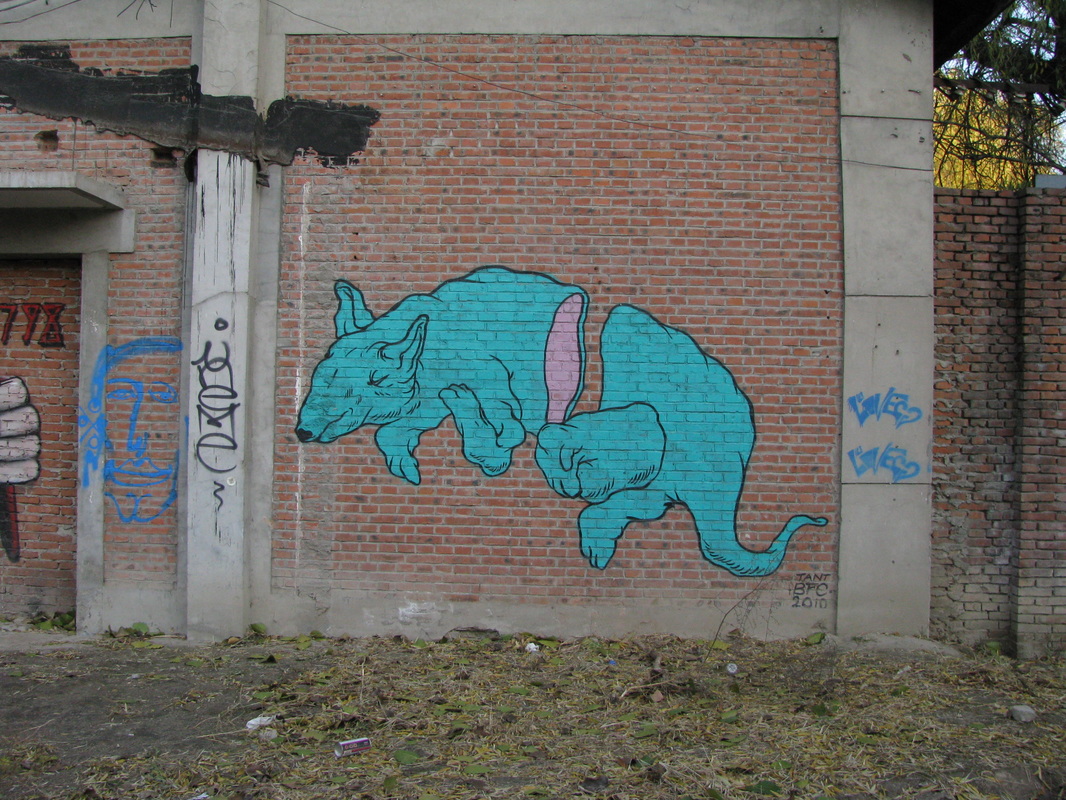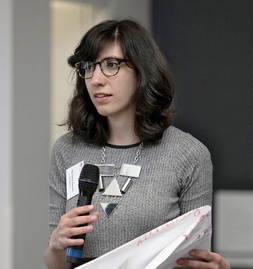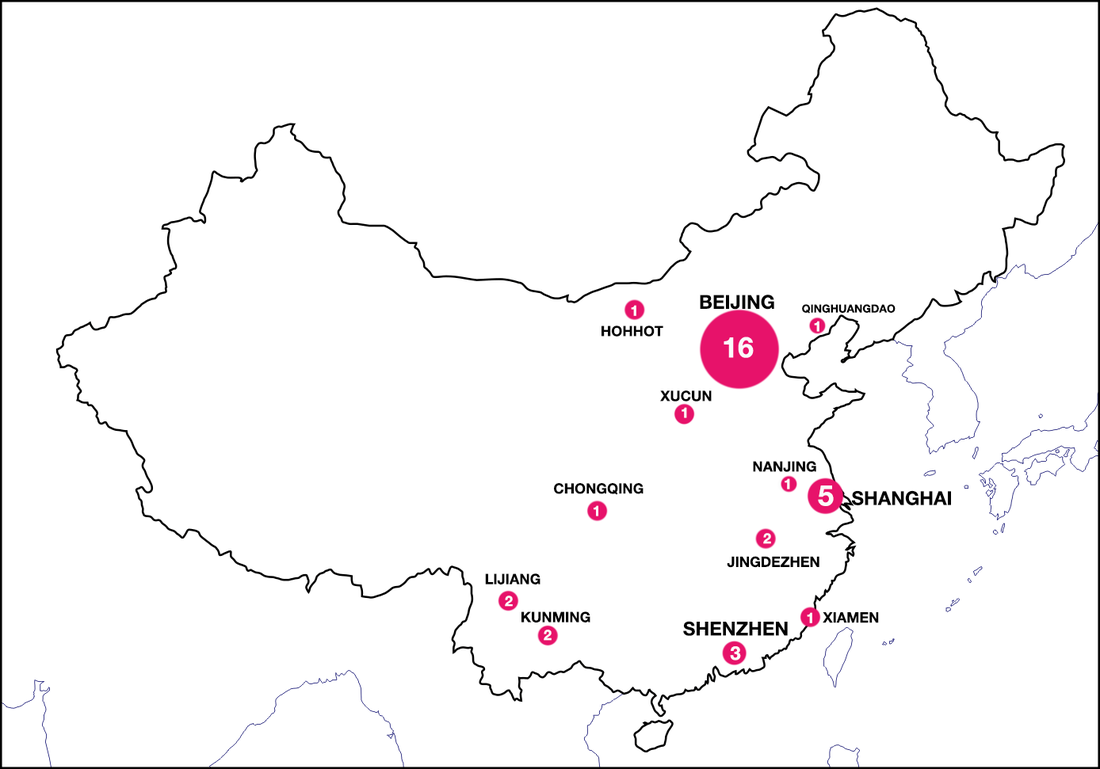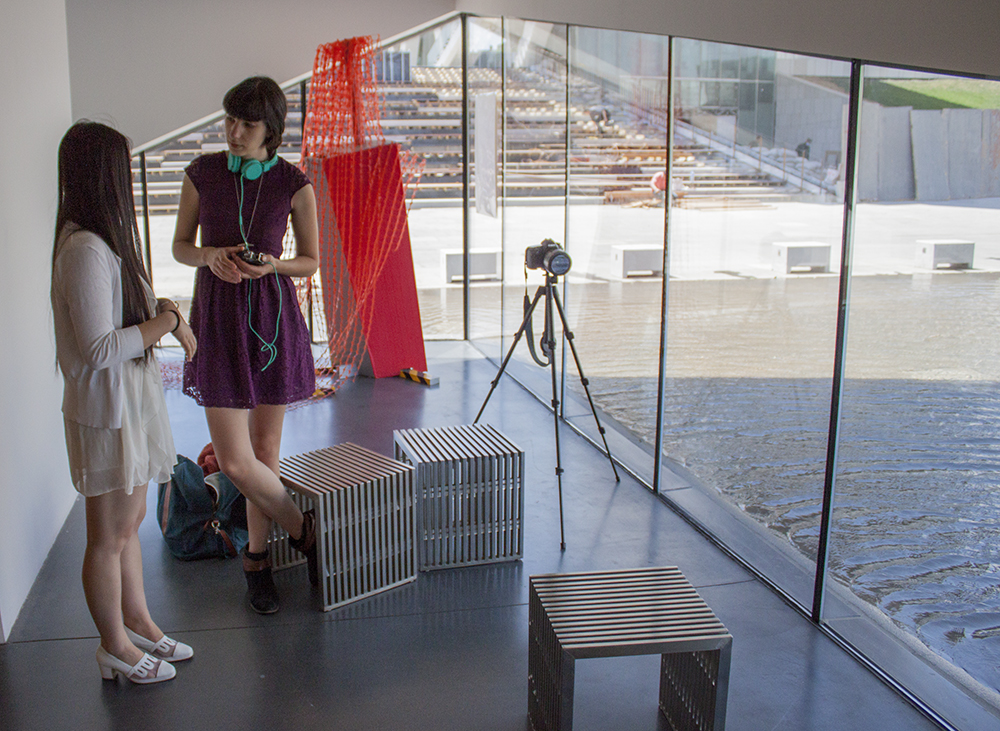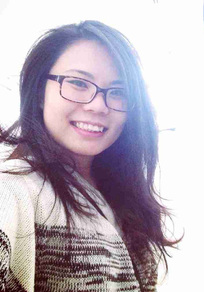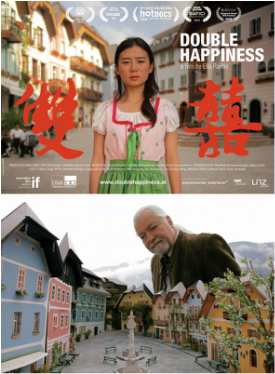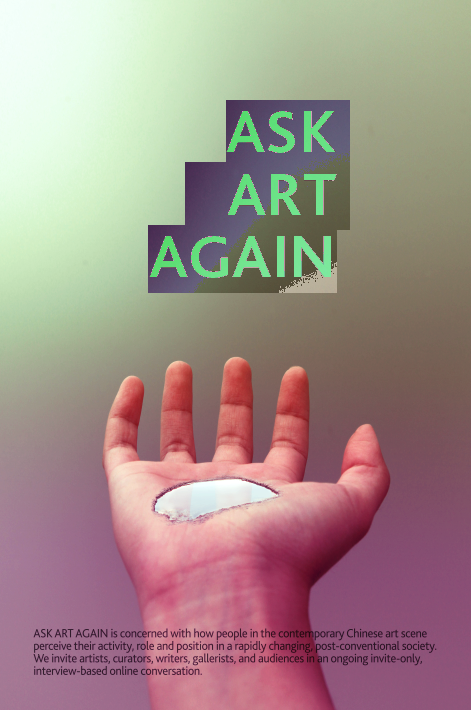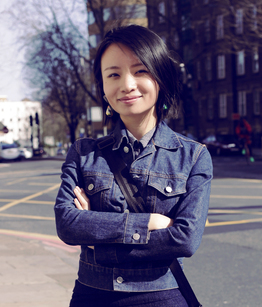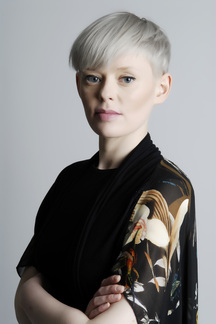Keynote Speakers
|
SHEN Xin
Artist, CCVA and CAC Fellow 2015 Website: http://www.shenxin.info/ Title: Shoulders of Giants https://vimeo.com/138225668 Abstract: Shoulders of Giants appropriates and extends the model of a symposium through animation, performance and projection. On the occasion of "Transdisciplinary China: Research in Practice", the invited speaker Johnny Golding will animate creature derived from Shan Hai Jing (Also known as The Classics of Mountains and Seas, C4th BC) as she speaks, discusses with other speakers participating in the one day conference, and conduct Q&A. Shoulders of Giants was firstly held on 29 July 2015 at Senate House, London, with Esther Leslie, Hannah Black, Mark Fisher and Simon O'Sullivan. The project consistently seeks to investigate the strategies that artists, theorists and critics employ to deal with mechanisms of power – such as oppression and censorship, surveillance and punishment, unemployment and estranged labour – that are inherent in daily politics; to highlight the many desires that are afloat where power multiplies, unfolds, fluctuates, and diminishes; to render visible the physical and psychological affects that they have. It will position theoretical and artistic practices as practice of action, and therefore looks at how the dispositions of each practitioner are appropriated in various modes in order to produce subjectivity, to communicate change and to form solidarity.Establishing thinking and making as forms of liquidity in race with capital, the event will consider the implications of such positioning and its potential to redirect and reorganise power relations through what happens and as it happens – to speculate upon how such strategies transcend perceived limitations. Shoulders of Giants is supported by Chinese Centre for Visual Arts (CCVA), Birmingham City University, and Faceshift; funded by Chronus Art Centre. Bio: SHEN Xin lives and works in London. Her work has recently been shown at CAC (Shanghai), W139 (Amsterdam), IMT Gallery (London), The National Art Centre (Tokyo), ICA (London), World Museum (Liverpool) and Chisenhale Gallery (London) among other places. SHEN was selected for the touring exhibitions of Bloomberg New Contemporaries 2014 upon graduating from Slade School of Fine Art. She is the recipient of the CAC (Chronus Art Centre in Shanghai) Fellowship for Chinese Artist at Birmingham Institute of Art and Design and Centre for Chinese Visual Arts in Birmingham (2015). Upcoming screenings and shows include CG-Arts (Kagoshima, Japan), Global Committee (New York), OCAT (Shanghai), CAC (Shanghai). SHEN’s practice concerns the social position of the artist,and is is foregrounded by moving image work. Professor Johnny Golding Chair in Philosophy and Fine Art at Birmingham School of Art and is Director of the PHD/Post-Doctoral Centre for Fine Art Research (CFAR), Birmingham City University. Title: Cry Me an Ocean: A Short History of the Present Abstract: In the everyday politics of mass murder, mass repression, mass sexual assault and mass starvation, these violently dystopic hells unite in their mass cruelty to create one thing rather effectively: they produce a blanket nomadism, a de-territorialisation so profound as to force the nation-state, its armies, legislators, and its people (that is to say, ‘the people’) into a wild, albeit ineffective, nonsense game of three halves. On the one hand: an Us v Them clarion call; on the other hand: a ‘not-in-my-backyard’ ethnic cleanse; and on the third hand: a collective outpouring of despair, fear, exhaustion, anger, nausea – label it as one may – all in the name of this dying ember called ‘humanity’. Dotted amongst the three halves exist the unnamed medics, journalists, artists, philosophers, scientists, technicians, economists, housewives, poets, punks, little girls, little boys, ballerinas, the diseased, the middle class, the poor, the once well-healed, the queer – all now walking, swimming, drowning, crying, reaching out, getting shot, moving on, being moved on. Handing out blankets. Not giving up. Throwing in the towel. Prostrated, dead on a beach. Recorded warfare savagery and its consequences dating from at least the 12th century BC onward suggests the age-old question: was it not ever thus? The short, easy, answer seems a resounding ‘yes’. The longer, more accurate one, around which this story cautiously unfolds, is ‘no, not exactly’. Bio: Prof Johnny Golding holds the Chair in Philosophy and Fine Art at Birmingham School of Art and is Director of the PHD/Post-Doctoral Centre for Fine Art Research (CFAR), Birmingham City University. A firm believer in research led by curiosity, experiment and risk, Prof Golding is renowned for her philosophy enactments, installations and sound-scape exhibitions. Her research covers the intra-disciplinary intersections of the logics of sense, including poetics, fine art, contemporary philosophy and the ‘wild sciences.’ Recent publications include: In the Shadow of Akimbo Corporatism: The ‘Becoming-Human’ of a People; Fractal Philosophy and the Small Matter of Attunement; and Ana-Materialism and the Pineal Eye. Films include: Once Upon a Wormhole and Games of Truth: Blood Poetics in 7 part harmony. She is executive Editor for the internationally peer reviewed / gold standard journal, Zetesis (ARTicle Press). |
|
Professor Jonathan Harris
Professor in Global Art and Design Studies at Birmingham City University Title: The Global Asian Contemporary Art World: Analytic Perspectives Abstract: The rise of Chinese contemporary art over the last two decades has reflected the global economic power of the People's Republic as it has grown to be the second largest nation-state economy in the world. Yet two sets of questions attend on this development which I will address in my lecture. Firstly, how does Chinese contemporary art and culture make sense within a broader understanding of a now 'Global Asia'?. What designations and affiliations does this term 'Asia' invoke - compared with 'Europe' or the 'Americas'? Secondly, how have globalization processes attenuated the cultural meanings of 'Chineseness' specifically? What kinds of representativeness can artworks reasonably be held to sustain within attempts to analyse the component elements of a global contemporary art world? Bio: Jonathan Harris is newly-appointed Research Professor in Global Art and Design Studies at BCU. He is author and editor of 20 books, including The New Art History (2001 Routledge, translated into Mandarin, Korean, Turkish and Farsi), Globalization and Contemporary Art (2011 Wiley Blackwell) and The Utopian Globalists: Artists of Worldwide Revolution, 1919-2009 (2013 Wiley Blackwell). His next book will be The Global Contemporary Art World: A Rough Guide (2016 Wiley Blackwell). Harris has lectured and taught at many universities and museums around the world over a thirty year period, recently including Seoul Museum of Art, Hong Kong Polytechnic University, the Royal College of Art London and Sotherby's Institute, New York. He is editor, along with Menene Gras (CasaAsia) and Bashir Makhoul (BCU), of IB Tauris book series Contemporary Art and Visual Culture in Global Asia. |
Speakers
|
|
Zara Arshad
Postgraduate student (MA - History of Design) Researcher - V&A/RCA Website: http://cargocollective.com/zara Title: Design Museums in Contemporary China: Constructing Twentieth- and Twenty First-Century Design Histories Abstract: Using the China Industrial Design Museum (CIDM) in Shanghai as a case study, this short paper will explore how design museums in contemporary China engage in the research of twentieth- and twenty first-century design history narratives. Guided by government policies intended to expand the Chinese cultural and creative industries, the number of art and design museums in the PRC has proliferated since the 1980s. Such institutions today have become vital to the national and cultural identity of predominantly urban spaces, while policymakers increasingly associate ‘design’ with abstract concepts like ‘creativity’ and ‘innovation’, which are promoted as key to the economy. In response, Chinese design museums are now focusing on the construction, reconstruction and expansion of modern design histories of the Greater China region in order to influence contemporary practice and facilitate industrial growth. Yet, ‘design’ or sheji 设计 is often understood as a twentieth-century foreign construct that is frequently discussed in dichotomous categories, such as East/West, modern/traditional, or ancient craft/new technologies. This paper concentrates on the global, transnational and transdisciplinary research methodologies of the CIDM, as traced via its exhibitions, displays, and learning programmes, to propose alternative ways of considering ‘design’ and ‘design history’ in a Chinese context. Bio: Born and raised in the UK, Zara has also lived in Indonesia, Syria and China. She is a recent graduate of the V&A/RCA MA History of Design programme, where she studied as the 2013-2015 Friends of the V&A Scholar, and holds an undergraduate degree in Design from Goldsmiths College, University of London. Since 2008, Zara has been practicing as a freelance graphic designer and writer, with clients such as United Nations Volunteers, Interior Design, Icon, Change Observer and AIGA. She has also worked at Icograda Beijing, British Council in China and Beijing Design Week, and currently writes for Design China. |
|
Claudio Beorchia
Artist, Venice Website: http://www.claudiobeorchia.it Title: Artist in residence in Shanghai Abstract: My proposal for the symposium is the presentation of the artistic projects I realized during an artist in residence program in China. I am an artist fascinated and intrigued by the complexities of the surrounding world, especially when they more obviously affect society. I try to draw attention on these aspects through post-conceptual pieces of art, which use multiple languages, media and materials. My aim is to create works and processes being as eloquent and meaningful as possible, in a continuous search of formal synthesis and effectiveness, in order to achieve a deep and direct involvement of the observer. From August to October 2013 I had the opportunity to stay in Shanghai, host of Swatch Group at Swatch Art Peace Hotel (http://www.swatch.com/en/explore/swatch-art/the-swatch-art-peace-hotel), located in the heart of the Bund. The Swatch Art Peace Hotel is a residence for artists (visual artists, designers, musicians, film-makers, photographers…) from around the world, invited by Swatch to live and work in a dynamic and complex city as Shanghai. My artistic practice is strongly connected to the cultural and social context in which I live. So, the residence program in S.A.P.H. has been a precious opportunity to create new artistic projects, which investigate and reflect the Chinese society and culture. Bio: Claudio Beorchia (Vercelli, 1979 – lives near Venice) is an Italian visual artist. He studied Design and Visual Arts at IUAV University of Venice and at the Academy of Fine Arts in Milan. He obtained his Ph.D. in Design Sciences at the Doctoral School of IUAV University. His artworks have been displayed in numerous exhibitions in Italy and abroad (Argentina, Armenia, China, Croatia, France, Morocco, Russia, Slovakia, Uruguay). He has been artist in residence in Italy (Turin, Sardinia, Molise, Sicily), China and Denmark. |
|
Magdalena Furmanik-Kowalska
Academic/Curator - Polish Institute of World Art Studies Website: http://magdalenafurmanik.pl/ Title: Culture Trouble: The Significance of Cultural Context in Art Historian’s Research on Chinese Contemporary Art Abstract: The presentation will depict a transdisciplinary method created by me while I was working on dissertation. „Culture Trouble” is a paraphrase of the title of a book by Judith Butler. She discusses the impact of gender on the individual’s identity, while the aim of my research was to analyse the influence of native culture on the artwork of selected Chinese women, for instance: Chen Qingqing, Liu Liyun, Cao Fei, Chen Qiulin, Liu Ren. I used Julia Kristeva’s theory of intertextuality, where all cultural texts, including literary works, scientific studies or artworks, are meeting points for various earlier ones. They all create specific mosaics composed of heritage – the elements of tradition, both material and immaterial – like scroll painting or Taoist rituals. That is the reason why not only current political and social situation in the PRC, but also the knowledge of traditional culture, is so significant to proper read and interpret, and then talk about Chinese contemporary art. Having all that in mind I constructed the transdisciplinary method including traditions of Western and Eastern art history, Cultural Studies as well as Sociology and Anthropology theories. Bio: Magdalena Furmanik-Kowalska received her Ph.D in Art Studies from the Nicolaus Copernicus University in Torun in 2014. Before she graduated Gender Studies at the University of Warsaw in 2009. Her research involves Chinese and Japanese new media art. She was co-organizer of several international conferences on Asian art such as "Poland - China. Art And Cultural Heritage" in 2009. Her publication include “Costume – mirror of culture” (2013) and “Culture trouble. The Contemporary Art of Japanese and Chinese Women” (2015). She is a member of the International Association of Art Critics and the Polish Institute of World Art Studies. |
|
|
HUNG, Keung
School of Design, Hong Kong Polytechnic Abstract: https://hungkeung.wordpress.com Title: How the traditional Chinese idea of time and space can be applied through digital moving images Abstract: In this paper, I argue that traditional Chinese thinking and its manner of approaching art can be successfully expanded onto a different platform: digital media art. My research (both in theory and practice) shows how this transformation expands the notions of time and space and forges new interdisciplinary correlations by addressing traditional Chinese culture in four different but interrelated manifestations: the philosophy of Dao, calligraphy, painting and sculpture. As a result, I claim that digital media can shift the notions of time and space from traditional Chinese thinking into contemporary digital art. Conversely, the digital concept of time and space can be interpreted by an analysis of the traditional Chinese philosophy of Dao, as well as a new understanding of ‘scroll format’ and Chinese digital art has been introduced through my own practice. Bio: Dr. HUNG studied in Hong Kong Polytechnic University; Chinese University of Hong Kong and Central Saint Martins College of Art and Design, London, United Kingdom with a MA in Film and Video; visiting scholar at the Center for Art and Media (ZKM), Germany. HUNG Keung is currently an Assistant Professor of Hong Kong Polytechnic University. He obtains his PhD (Digital media art & Chinese philosophy) of the Planetary Collegium at Zurich University of the Arts, Switzerland. HUNG Keung founded imhk lab, focuses on new media art and design research in relation to Chinese philosophy and interactivity. |
|
Olga Makshanova
Postgraduate student (PhD), St Petersburg Website: http://mediaphilosophy.ru/ Title: Ideogram as an ultimate figure of mediation Abstract: In this paper I want to propose the understanding of ideogram as a complex notion, that includes both the real traits of actual Chinese writing system and the different account thereof. We can trace development of the notion from the interest in Chinese writing in context of 17th search for the ways to refine language, to modernistic accounts of ideogram as a model of poetic medium and further development of these ideas in concrete poetry moment, and, finally see its influence on contemporary media studies. We can conclude that historically ideogram was present at the intellectual scene in the times of media shifts and crises of representation, and that now it can, again, become the “thing to think with” for the analysis of problems of contemporary media studies, such as borderlines between word and image and the changes writing undergoes in the digital realm. Bio: Olga Makshanova received her MD from the Oriental Department of SPSU. The topic of her thesis was "The influence of European romantic literature on the works of Xu Zhimo". While working on the thesis she spent three years studying in China. Currently she is working on PhD thesis ("Ideogram after the Iconic Turn") within "Cultural Studies" program at Philosophy institute of Saint-Petersburg State University. Olga is a member of Saint-Petersburg Center of Media Philosophy and the European Association for Chinese Studies. Her research focuses on the writing and script in the age of new media. |
|
Tobia Maschio
Researcher/Academic - Ca’ Foscari University of Venice Website: https://www.flickr.com/photos/thegreatslug/ Title: Chinese Graffiti: Street Art as Artistic Expression and Vandalism in PRC. Anti-Cultures, Subcultures, Resistance, and Definition of Place and Space in Urban Context. Abstract: The urban space represents an experimental sandbox for municipal authorities. It is subject to an operation of quadrillage, or coverage, in which it is divided into defined areas, according to their function and expected use. Every area is formed by physical space, which is given a precise function and hence it is transformed into a place, whose characteristics are top-down determined and defined. This kind of urban planning corresponds under many aspects to the theoretical framework provided by Jean Baudrillard, Michel Foucault, Henri Lefebvre, and, generally speaking, Cultural Studies. Street art and graffiti are a tangible manifestation and expression of subcultures, such as hip-hop culture, and are used by antagonist movements or individuals as a medium to externalize dissent. Moreover, as Jean Baudrillard observes, defacing and/or decoration redefine and hack the purpose of streets, buildings, entire urban blocks, reopening the discourse about the definition of space as a place. Even though their historical and aesthetic roots are traceable and defined, street art and graffiti are a global phenomenon with site-specific peculiarities, influenced by different cultures and social contexts in which they root and develop. This paper aims to analyse the presence of street art and graffiti subculture in Beijing, PRC. Even though street art and graffiti designated areas are present in all the aforementioned urban contexts, the presence or the absence of illegal artwork and its contents are an item of inquiry that can be analysed within the theoretical framework of cultural studies. Bio: Tobia Maschio is a research fellow at Ca' Foscari University of Venice, Department of Asian and North African Studies. In the same university, he obtained his Ph.D. in cultural studies applied to Chinese society and its contemporary culture. Beside his academic work, Tobia Maschio has curated a photographic blog about street art both in China and Italy and kept working as illustrator and graphic designer. |
|
Menene Gras Balaguer
Director for Culture and Exhibitions at CASA ASIA (Barcelona and Madrid, since its foundation in 2003).; Director of the CAFW (Casa Asia Film Week) since 2011; PhD by the University of Barcelona and Former Professor of Aesthetics at the University of Barcelona; Art critic and Curator; Director of the seminar ASIAN MAPS (Mapas Asiáticos) within the ARCO art Fair in Madrid, from 2004 to 2015. Previously cultural director of the Instituto Catalán de Cooperación Iberoamericana (now Casa America de Catalunya) for more than ten years. Recently awarded the ACCA Award 2015 for the best project travelling out of the country entitled “Languages and Aesthetics of Spanish Video Art: Ten years of critical practices”, shown in Seoul, Beijing and Hong Kong, and currently across South East Asia. As an art critic, she has written for the Spanish newspapers EL PAÍS, LA VANGUARDIA, ABC, EL PERIÓDICO, and was the Spanish correspondent for ARTFORUM (New York) for over 12 years. In addition, to writing for other art magazines and publications, catalogues, anthologies and four books of poetry. Recent curatorial projects include The House and the Labyrinth (Ceart, Madrid, 2015), El Jardín japonés: Topografías del vacío (MATADERO/Madrid, Barcelona Sant Pau, Hospital Real in Granada, Museo San Telmo from San Sebastian and Casa de la Moneda from Segovia, 2014-2015); The Tree and the Shadow (Madrid, Barcelona, Beijing, 2014-2015); Microcosm by artist Miao Xiaochun (Museo Es Baluard, Mallorca, 2014), The Architects of Nothingness (Casa Asia, Barcelona, 2013) and Languages and Aesthetics of Spanish Video Art: Ten Years of Critical Practices (Songwon Art Center, Seoul, 2013; Instituto Cervantes, Pekín, 2013-2014, LOOP Alternative Space, Seúl, 2014 and Video Tage, Hong Kong). Recent publications include The Japanese Garden: between the spatiality and temporality of the landscape (March, 2015); Chiharu Shiota. Las líneas de la mano and Chiharu Shiota. The Hand Lines (ACTAR ED: Barcelona, 2014); Los Arquitectos de la Nada with I. Ontiveros and J.M. Pascuets (Barcelona, 2014); Ma Yangson. Entre la Modernidad global y la Tradición local / Between global Modernity and local Tradition (Actar, Ed., 2013) and Digital Narratives and Image Technologies (Ministerio de Cultura, Educación y Deporte y Casa Asia, 2012). |
|
Kira Simon-Kennedy Researcher - China Residencies Website: http://chinaresidencies.com Title: But Is It Real? Field Research Methodology for Finding Accurate Information in China Abstract: Hundreds of new museums, galleries, and independent art spaces open every year across mainland China. Unfortunately, nearly just as many close, go on hiatus, or simply cease to continue programming in any given year. How can artists, researchers, and curious visitors figure out what really exists? To create an up-to-date and accurate directory of artist residencies in Mainland China, we combine a series of online and in-person research methodologies to determine if a program is real, running, and actively managed. By combing through Chinese and international social media accounts, conducting extensive interviews over Skype with past and current staff members and participating artists, as well as physically visiting and photographing each program, we’re starting to establish a comprehensive picture of the field of artist residencies and of the greater art scene in China. We ask tough questions, often uncovering murky funding sources, a reliance on un- or underpaid labor, and a widespread uncertainty about the future of art spaces. Through our research, we aim to compile best practices and encourage transparency to promote sustainability for these different art and community spaces in China. We also hope to enable artists, researchers, and audiences to use these research tools to successfully navigate emerging art worlds, and read between the lines of institutional websites and mission statements. Bio: Kira Simon-Kennedy is the co-founder of China Residencies, a directory and regional network of artist residencies in China. Kira is also a French and Mandarin translator for contemporary art publications and an independent film producer focused on projects centring around music and human rights in China, Iceland, France, Mali, and Mississippi. Kira holds a BA in Chinese and photography from the University of Pennsylvania, and a recent graduate of the inaugural Arts & Culture Social Impact Strategy program at Penn's School of Social Policy & Practice. |
|
ZHANG Qinghong
Founder of the Chronus Art Center in Shanghai Website: http://www.chronusartcenter.org Established in 2013, Chronus Art Center (CAC) is China's first non-profit art organization dedicated to the presentation, research/creation and scholarship of media art. CAC with its exhibitions, residency-oriented fellowships, lectures and workshop programs and through its archiving and publishing initiatives, creates a multifaceted and vibrant platform for the discourse, production and dissemination of media art in a global context. CAC is positioned to advance artistic innovation and cultural awareness by critically engaging with media technologies that are transforming and reshaping contemporary experiences. The Chronus Art Center (CAC) Fellowship is an international artist residency programme and professional partnership between Chronus Art Center (CAC), Shanghai, Centre for Chinese Visual Arts (CCVA) and the School of Art at Birmingham City University. The Fellowship offers an exciting opportunity for an emerging artist at the commencement of, or at a critical point, in their professional career, to further develop his or her practice particularly in relation to Chinese art and culture. It is designed particularly for Chinese national students and graduates based either in China or in the UK. For up to six months, the selected artist takes up residency in Birmingham, UK, becoming an active member of the CCVA and its research community. |
|
TANG Siyun
Postgraduate student (MA) Researcher/Curator Website: https://uk.linkedin.com/in/siyuntang Title: Pasted Landscape Abstract: PASTED LANDSCAPE is two events in London, Beijing and Hong Kong, consisting of an artist’s film screening, research presentations and discussions. It is a year-long curatorial research project which features artistic practices and architectural studies focusing on the Mimicry Housing phenomena in transforming societies, especially in China. By artistic and architectural investigation, PASTED LANDSCAPE aims to provide a platform to translate the multilayered cultural meaning behind the Mimicry Architecture phenomena, inviting international and local audiences to participate in these discussions. The copycat communities are the afterlife of architectural images: the fantasies that has been decontextualised and manifested with a new meaning. By bringing architects and artists into the think tank, Pasted Landscape was not only looking for a proposition for local residents to engage the rapid urbanisation transformation processes, but also raised a question to the global citizens on how they imagine the city space they inhabit now, as well as the space for the future. Architecture is not just about the building, but about a set of built environments, social relationships and spacial orientations. Pasted Landscape invites participants to think architecturally, about how we inhabit in our world. Bio: Siyun Tang (b.1989) is a curator and researcher currently based in London. In her final MFA studies at Goldsmiths, University of London, she examines the identity reconstruction in transforming society as China, through its bodily and spatial practices. Her final projects, Pasted Landscape will be presented as a touring event cover location including London, Beijing and Hong Kong. In addition to this, she is interested in the artistic response to the dynamic composition of twentieth century digitality. As an arts writer, she has passion in the self-publishing practices. She published a project Mirage in The Standard Model, Curatorial Propositions with other 17 curators in July 2015. In addition to this, she is also a founder and a member of an artist collective The Rooftop in China, which has established in 2010. |
|
ZHU Xiaowen & Lucy Brydon
Title: Ask Art Again – An Interview-based Research and Performance Project Abstract: Ask Art Again is an interview-based research and performance project initiated by Xiaowen Zhu (CN) and Lucy Brydon (UK). Concerned with how people in the contemporary Chinese art scene perceive their activity, role and position in a rapidly changing, post-conventional society, the project engages artists, curators, writers, gallerists, and audiences in an ongoing invite-only, interview-based online conversation. The form of the conversation includes but is not limited to a registered email account representing a collective identity of “Ask Art Again”, curated digital content on social media and YouTube channel. It refers to previous Chinese artist interview projects including 40+4 Art Is Not Enough! Not Enough!, as well as artistic reflection inspired by answers and feedback provided by interviewees. Ask Art Again creates a list of questions reflecting on artistic development in China, both conceptually and economically the positions of artists in the global art market, and the relationship between art and history, politics, society and culture. A group of artists, curators, writers, gallerists, and members of the public are contacted to provide answers to a randomly selected question from the list. The interviewees are also asked to invite their art contacts to join the interview as well. The results are collected via email.There is no limitation on how large the group of interviewees can become. The project is interested in the medium of art interviews as a form of critique of the theoretical framework of reading contemporary art. It also explores the impact of the new media and technologies on artists during the collaborative process. The presentation of the project will be a collaborative performance created by Xiaowen Zhu and Lucy Brydon. Email responses and other online digital content, projected on a screen, will be choreographed to accompany the performance. ZHU Xiaowen London-based documentary filmmaker, media artist, curator and writer. Website: http://www.zhuxiaowen.com/ Bio: Xiaowen Zhu is described as a visual poet, social critic, and aesthetic researcher, she uses video, photography, performance, installation and mixed media as platforms to communicate the complex experience of being an international person and to wrestle with the notion of a disembodied identity. Zhu’s work has been widely shown internationally. She is the first receipt of the TASML Artist Residency Award and Marylyn Ginsburg Klaus Post-MFA Fellowship. She was an artist-in-residence at ZKM | Center for Art and Media, Karlsruhe, Germany and V2_Institute for the Unstable Media, Rotterdam, the Netherlands. Zhu received her MFA in Art Video from Syracuse University, USA. Lucy Brydon Writer, filmmaker and visual artist Bio: Lucy Brydon graduated from the University of Warwick with a First Class BA in English Literature and Creative Writing. She lived in Shanghai between 2005-2010, which nourished an interest in Chinese and other Asian cultures. Lucy trained in Film Directing MFA programme at Columbia Film School in New York. Her short films have been included in international festivals including Leuven, Schnit, Glasgow, Palm Springs and Aesthetica. Lucy’s essay introducing Scottish Documentary was included in the Directory of World Cinema: Scotland (Intellect Books, 2015). Lucy’s debut novel SHANGHAI PASSENGER will be published in September, 2015. |

